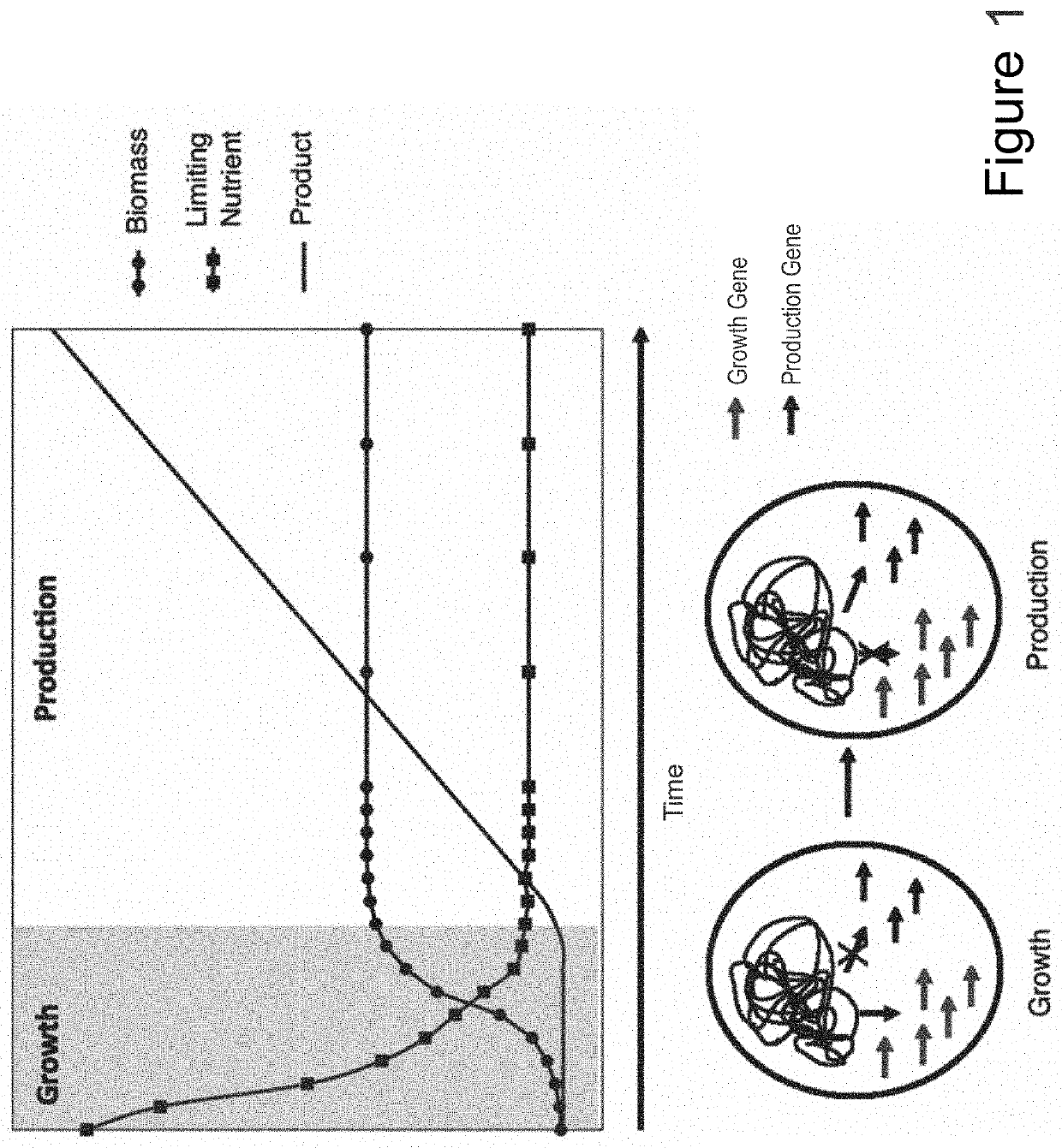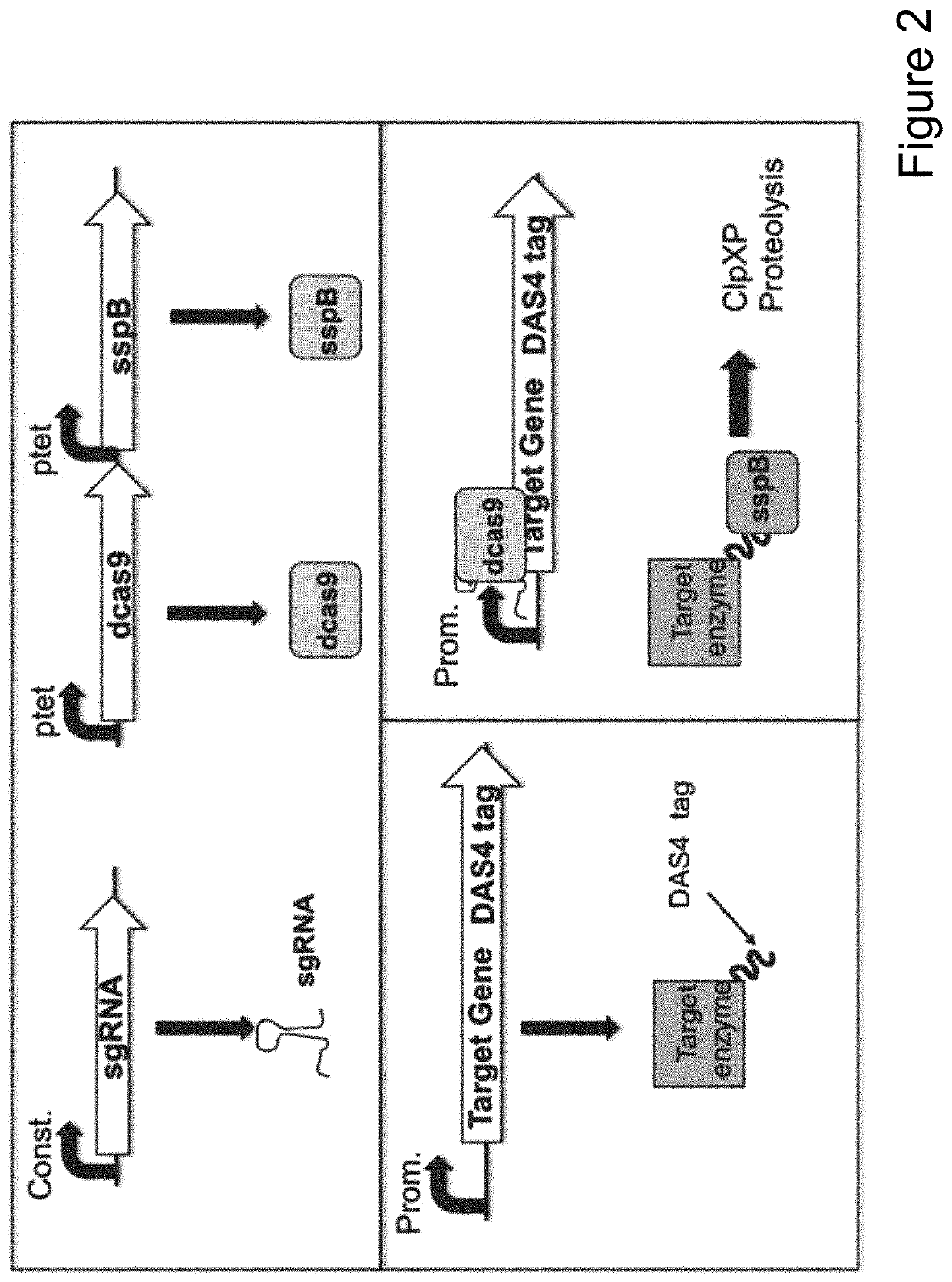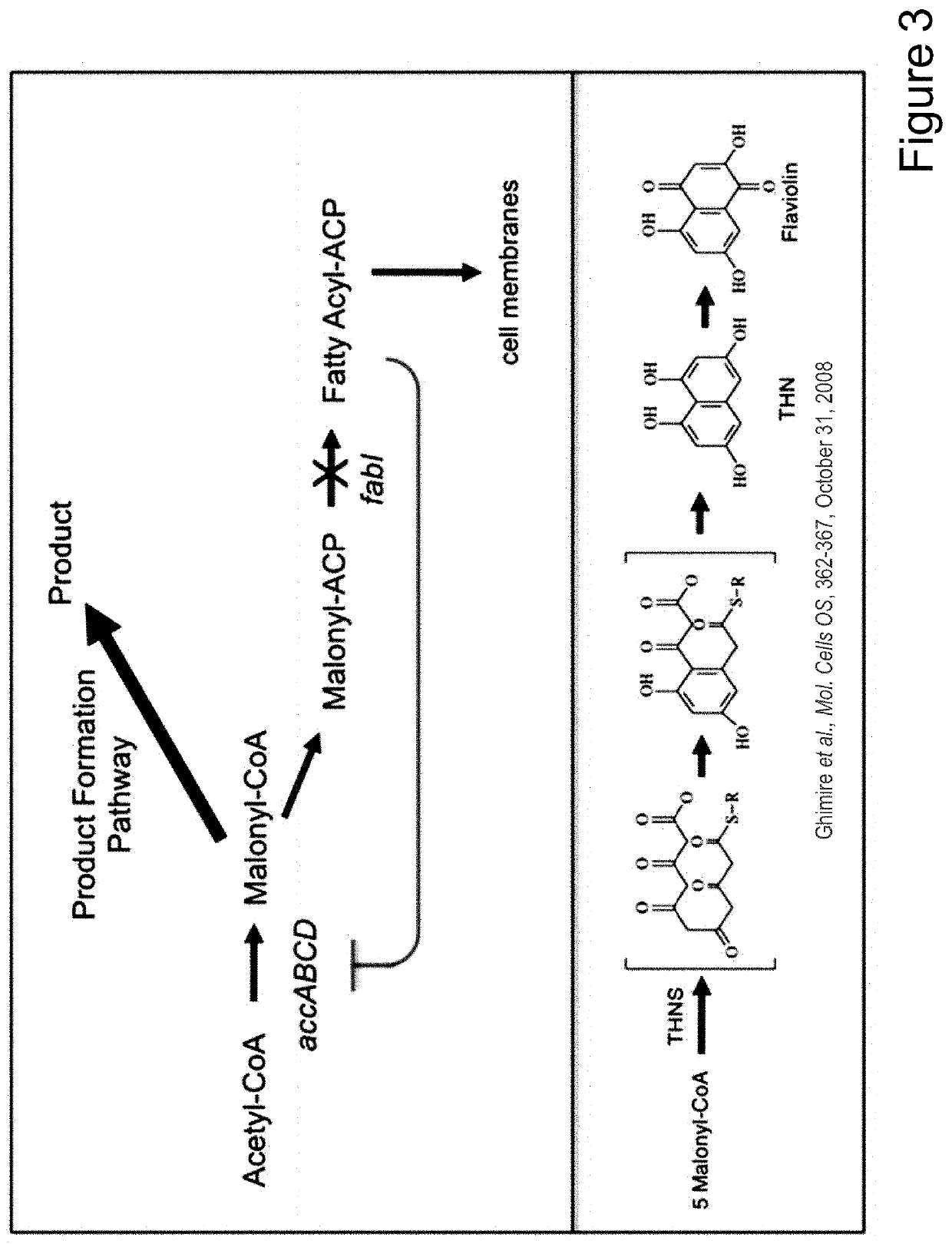Compositions and methods for rapid and dynamic flux control using synthetic metabolic valves
a metabolic valve and flux control technology, applied in the field of metabolic engineering, can solve the problems of limited microbial physiology a priori knowledge, cycle of trial and error, and inability to predict the behavior of metabolic engineering approaches, etc., and achieve the effects of increasing expression, increasing product production, and increasing production of acetyl-coa products
- Summary
- Abstract
- Description
- Claims
- Application Information
AI Technical Summary
Benefits of technology
Problems solved by technology
Method used
Image
Examples
example 3
xample
[0101]Numerous microbial strains, such as any of the strains listed in the Common Methods Section, may be genetically modified to express enzymes for the biosynthesis of a product. In addition these modified microbial strains can be further modified to contain a controllable synthetic metabolic valve for the dynamic reduction in enzyme activity of one or more metabolic pathways including those required for growth. These valves may utilize one or a combination of methods including gene silencing and controlled proteolysis. Further these modified strains may be used in a multistage fermentation process wherein transition between stages is concurrent with controlled activation of these valves. Specifically, any of these microbial strains may also be further engineered to express a heterologous production pathway enabling the product formation.
Example 4: E coli Host Strain Construction
[0102]Briefly, strain BWapldf (BW25113:ΔldhA, ΔpflB, ΔpoxB, ΔackA-pta, ΔadhE) was further genetic...
example 6
Plasmid Cloning
[0107]pCASCADE-control (SEQ ID NO:13) was prepared by swapping the tetracycline inducible promoter in perRNA plasmid (Luo et al. “Repurposing endogenous type I CRISPR-Cas systems for programmable gene repression” NAR. October 2014; DOI: 10.1093.) with an insulated ugpB promoter. The plasmid was constructed using standard Gibson Assembly methodology (Gibson Assembly Master Mix, obtained from New England Biolabs, Ipswich, Mass., USA), and synthetic linear double stranded DNA provided as Gblocks™ (Integrated DNA Technology, Coralville, Iowa, USA). Eton Bioscience (Research Triangle Park, N.C., USA) was used for plasmid DNA sequence confirmations.
[0108]Additional pCASCADE plasmids with single RNA guides were prepared via Q5 site-directed mutagenesis (New England Biolabs, Ipswich, Mass., USA),) following manufacturer's protocol, except that 5% v / v DMSO was added to the Q5 PCR reaction. For example pCASCADE-gltA2 (SEQ ID NO:14) was prepared using pCASCADE-control as templat...
PUM
| Property | Measurement | Unit |
|---|---|---|
| volume | aaaaa | aaaaa |
| volume | aaaaa | aaaaa |
| volume | aaaaa | aaaaa |
Abstract
Description
Claims
Application Information
 Login to View More
Login to View More - R&D
- Intellectual Property
- Life Sciences
- Materials
- Tech Scout
- Unparalleled Data Quality
- Higher Quality Content
- 60% Fewer Hallucinations
Browse by: Latest US Patents, China's latest patents, Technical Efficacy Thesaurus, Application Domain, Technology Topic, Popular Technical Reports.
© 2025 PatSnap. All rights reserved.Legal|Privacy policy|Modern Slavery Act Transparency Statement|Sitemap|About US| Contact US: help@patsnap.com



